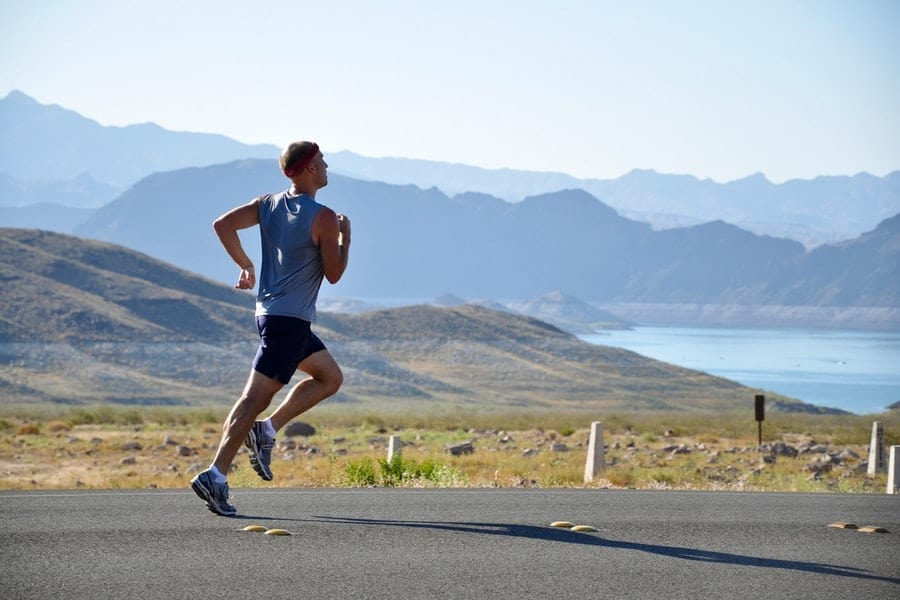It can be hard to know where the facts stop and the myths begin when it comes to exercise. One of the most common urban legends about running and other forms of exercise is that they build muscle in your legs. It’s a common belief, but is it true? Does running build muscle in your legs, or are you just burning calories and lowering your fat levels? Let’s find out, with some help from personal trainers at Fitness In Action.
Does Running Build Muscle In Your Legs?
Yes, running is a great way to build muscle in your legs. The muscles in your legs tend to be fairly small, so building muscle in your legs may be difficult. However, running can help you build muscle in your legs by increasing the blood flow to your legs and pumping more oxygen into the bloodstream. This can help you develop bigger and stronger leg muscles.
Why does running build muscle?
1. Runners Have Stronger Muscles
When you run, a lot of different muscles contract in order to keep you moving forward. If you are new to running, you might notice one particular muscle group – the calves – becoming particularly knotted and sore. This is caused by a group of muscles in the lower leg (known as the gastrocnemius and soleus) contracting repeatedly in order to drive you forward. Because these muscles aren’t used to being contracted so frequently, they become strained and tense, causing knots and soreness. However, over time your calves will become stronger and more accustomed to this kind of contractive stress, and they won’t be so sore or knotted up.
2. Running Strengthens Your Heart and Lungs
When you run, your body recognizes this as a form of aerobic activity – meaning your heart and lungs are working at a low intensity for a long period of time. This happens because your heart has to work harder in order to deliver oxygen-rich blood to your muscles – including the muscles in your legs. Over time, your heart and lungs become stronger thanks to this. When you’re running, your heart rate is increased and you’re using more oxygen than when you’re resting. As a result, your heart works harder to pump blood and get it to where it needs to go. This strengthens your heart and can reduce your risk of heart disease and stroke. As we mentioned above, your lungs are also working harder when you’re running. This makes them stronger and able to take in more oxygen which helps you to exercise for longer and harder in the future.
3. Running Burns Calories and Fat
The amount of calories you burn when running depends on a number of factors – including your weight, metabolism, and how fast you run. However, running is a great way to increase your metabolism and burn more calories both during and after your run. When you run, your body recognizes this as aerobic activity and uses fat for fuel. This means that you burn fat for energy rather than using carbohydrates. After your run, your body’s metabolism stays boosted with a “fat-burning fire” which means you’ll continue to burn more calories than usual – including the calories you drank during your run. Running is a great way to lose weight and tone your legs – and is often recommended for people who are trying to lose some weight. It’s a low-impact exercise that can be done anywhere and burns a ton of calories in the process.
4. Running Improves Mobility
When you run, you put pressure on your muscles, joints, and bones. This pressure causes them to adapt and become stronger – meaning they are less prone to injury in the future. When you run regularly, you are essentially strengthening your bones, joints, and muscles so that they are better able to handle the pressures of everyday life. This can improve your overall mobility and reduce your risk of injury in the future. Running is especially great for reducing the risk of a knee injury. Knee injuries are very common among runners – and are often caused by weak muscles and ligaments in the knee. Regularly running can help to strengthen the muscles and ligaments in your knee so they are less at risk of injury.
How to Build Muscle Through Running?
-
Jump Start Your Muscles
For most people, running is an aerobic activity, meaning it primarily uses your body’s large muscles as opposed to small muscles. For this reason, most runners don’t build any significant muscle strength from their usual routine. To jump-start, your muscles, add a few short runs of three to five 100-meter sprints into your routine. You should be able to comfortably run 100 meters in about 30 seconds or less. Sprinting increases the amount of lactic acid and byproducts created by your muscles, which leads to increased strength, endurance, and muscle growth over time. For beginners, it’s best to do these short sprints once every other week or so. You don’t want to do them too often because your muscles will get too used to the higher amount of lactic acid and won’t see any significant gains in muscle strength.
-
Build Strength and Endurance
For long-term muscle development, you want to increase your overall strength and endurance. To do so, you should aim to run at least three times a week for at least 30 minutes at a time, with each run building on the one before. Each run should include a variety of inclines, declines, and varying paces, as this will better prepare your body for real-world conditions. For instance, you can run at a slower pace up a moderate hill a few times a week, then run back down the hill at a faster pace. You can also include short bursts of uphill sprints thrown in for good measure. You can also try adding longer distance runs on the weekends for a more full-body workout.
-
Utilize High-Rep Short Sessions
As mentioned above, high-rep short sessions can be helpful in jump-starting muscle growth, but they can also be helpful in maintaining muscle while you’re running. If you’re looking to maintain muscle while running, you want to run at least three times per week for a 30-45 minute session at a moderate pace. While this will not directly build muscle, it will help prevent muscle loss from running. To prevent muscle loss from running, you want to keep your heart rate between 120-140 BPM (beats per minute). This can be difficult to maintain when you’re running on a treadmill, as many treadmills don’t accurately measure your BPM. To overcome this, try increasing your incline to 2-4% and walking instead of running when you’re on the treadmill.
-
Add Weights to Your Runs
For those looking to add muscle and strengthen their legs simultaneously, adding weights to your runs is a great idea. To incorporate weights into your runs, try wearing a weighted vest or adding ankle weights to increase the weight you’re running with. You can also try running up hills holding weights in your hands or try running with a weighted backpack. For best results, try incorporating heavy weights with short sprints, MU runners, and high-rep short sessions to ensure you’re not only strengthening but also engaging your muscles for the long term.
How Much Fat is Burned While Running?
Running:
You can burn about 6 calories per minute while running, or about 240 calories for a 30-minute run.
Swimming:
You can burn about 6 calories per minute while swimming, or about 240 calories for a 30-minute session.
Cycling:
You can burn about 5 calories per minute while cycling, or about 200 calories for a 30-minute session.
Weight training:
You can burn about 4 calories per minute while weight training, or about 160 calories for a 30-minute session.
The Benefits of Strength Training for Runners
- Increasing your metabolism: as we’ve seen, this is how you burn calories, but it can also help you build muscle.
- Preventing joint injuries: stronger muscles are less likely to be injured than weaker muscles because they are more able to support your joints.
- Improving athletic performance: stronger muscles will allow you to move your body faster, further, and with less effort.
- Improving your posture: stronger muscles will help your posture by supporting your joints.
Bottom Line
We’ve seen that running is a great way to burn fat and build muscle at the same time. More importantly, it is an excellent way to boost your overall health and fitness levels, while also challenging you to grow as a person. Whether you run or do another form of exercise, it’s important to remember that results don’t come from a single workout.




















Leave a Reply